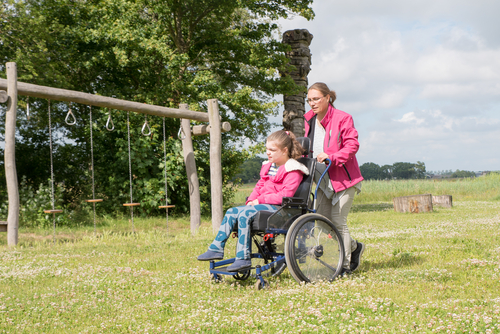Exercise Programs Benefit for Young People in Wheelchairs, But Need Greater Push

Exercise leads to improvements in the health and overall well-being of wheelchair-dependent children and young adults, including those with cerebral palsy, and needs to be better promoted though more rigorous study, a review article argues.
These conclusions, based on a review of some 30 published reports, were in the study, “Systematic review of physical activity and exercise interventions to improve health, fitness and well-being of children and young people who use wheelchairs,” published in the journal BMJ Open Sport & Exercise Medicine.
Exercise offers well-established health benefits. But for the disabled, those relying on wheelchairs, exercise programs are often limited to physiotherapy, with goals such as improving joint range of motion or muscle health. The lack of supervised exercise for exercise’s sake in these people makes it difficult to assess the benefits of exercise and physical activity for overall health — its physical, mental and social aspects — in wheelchair-bound patients, who also tend to be more frequently overweight and less fit.
Researchers in the U.K. did a wide search in different databases (Web of Science, PubMed, BMJ Best Practice, NHSEED, CINAHL, AMED, NICAN, PsychINFO) to identify exercise studies in children and young people (younger than 25 years old) using wheelchairs. They selected interventions that included physical activity or exercise with increase energy expenditure, at home or in the community.
Most studies were conducted in children with cerebral palsy who still had some significant degree of motor function and mobility. Very few included children with learning impairments.
Supervised and regular physical activity was seen to improve fitness, metabolism, quality of life, gross motor function, mobility and strength in these CP patients. Interestingly, one study reported that children showed evidence of greater independence and self-confidence after the intervention. There were no reports of adverse effects.
Researchers did not find cost-effectiveness studies, which are necessary to justify these interventions being part of health services in the U.K. They also noted that most studies were small and lacked rigorous methodology — meaning they were weak evidence for physical activity intervention in young wheelchair-dependent patients. They suggested new and more rigorous studies are needed to support a health policy focused on offering these activities.
“Undoubtedly, delivering physical activity interventions to children with severe mobility impairments who use wheelchairs is challenging, but investigators must make efforts to follow established exercise prescription guidance to maximise the effectiveness of interventions,” the researchers wrote.
“It was found that children who use wheelchairs can participate in physical activity interventions safely,” the team concluded. And, it added, “The paucity of robust studies evaluating interventions to improve health and fitness is concerning. This hinders adequate policymaking and guidance for practitioners, and requires urgent attention. However, the evidence that does exist suggests that children who use wheelchairs are able to experience the positive benefits associated with appropriately designed exercise.”


